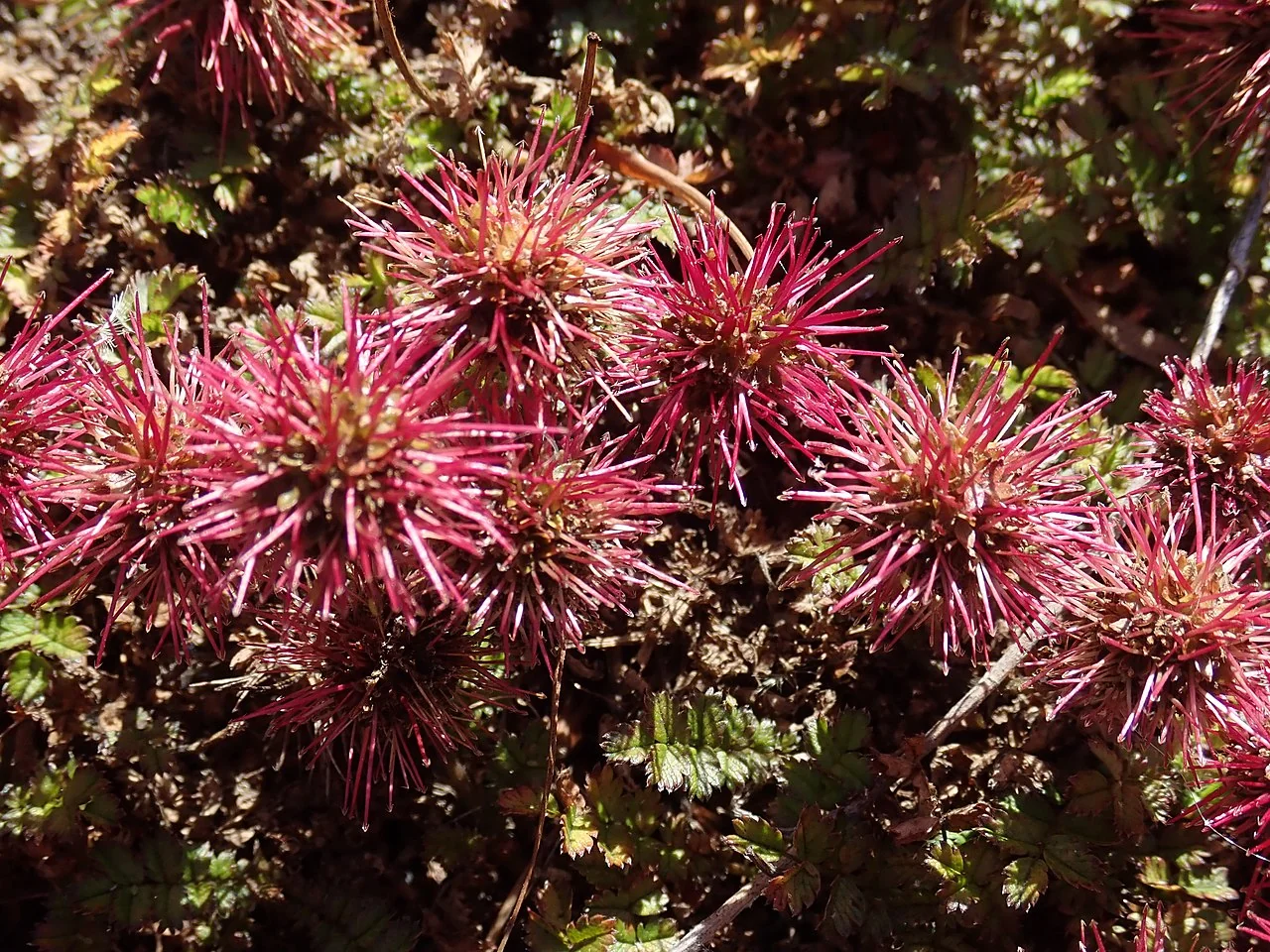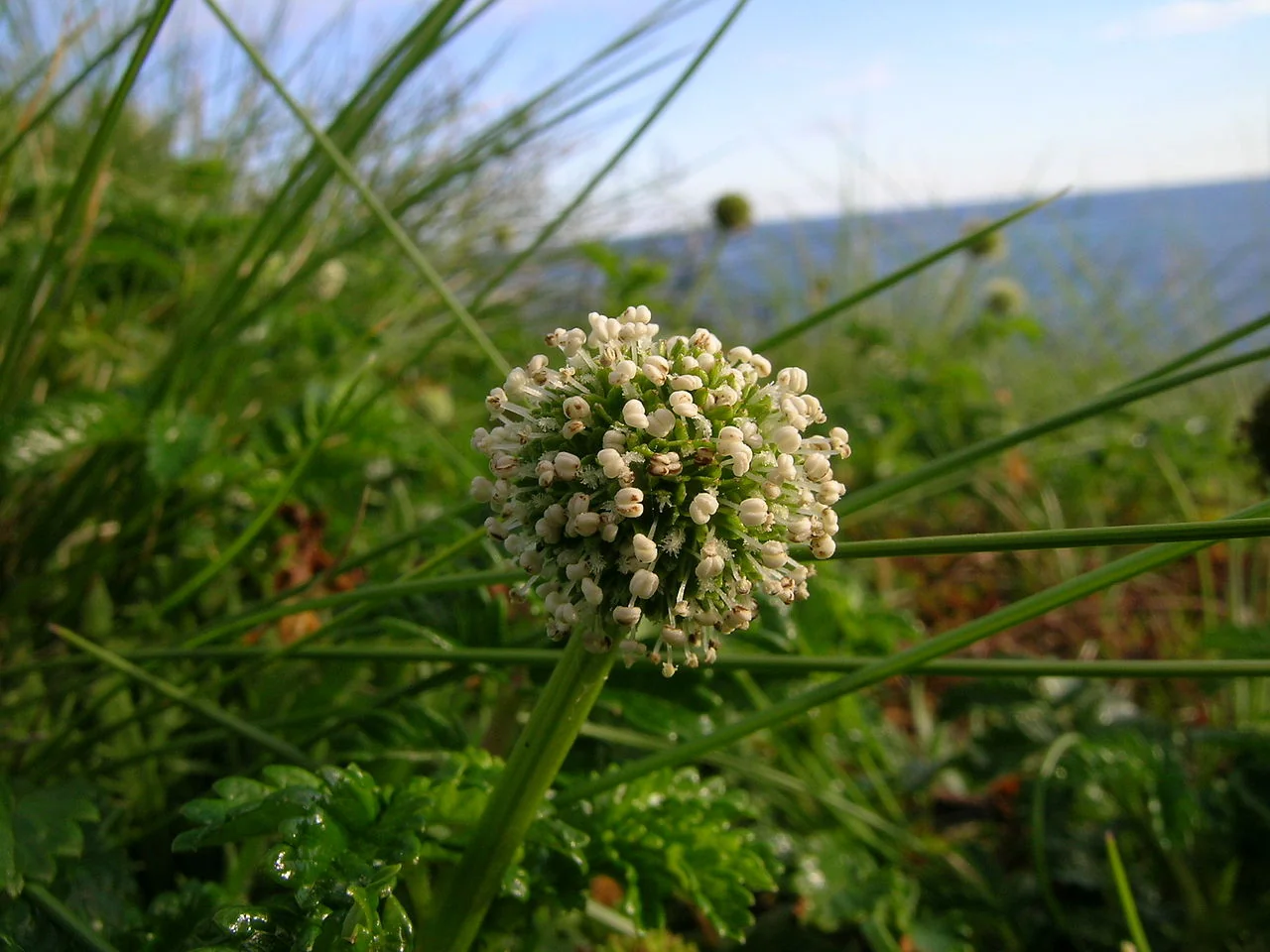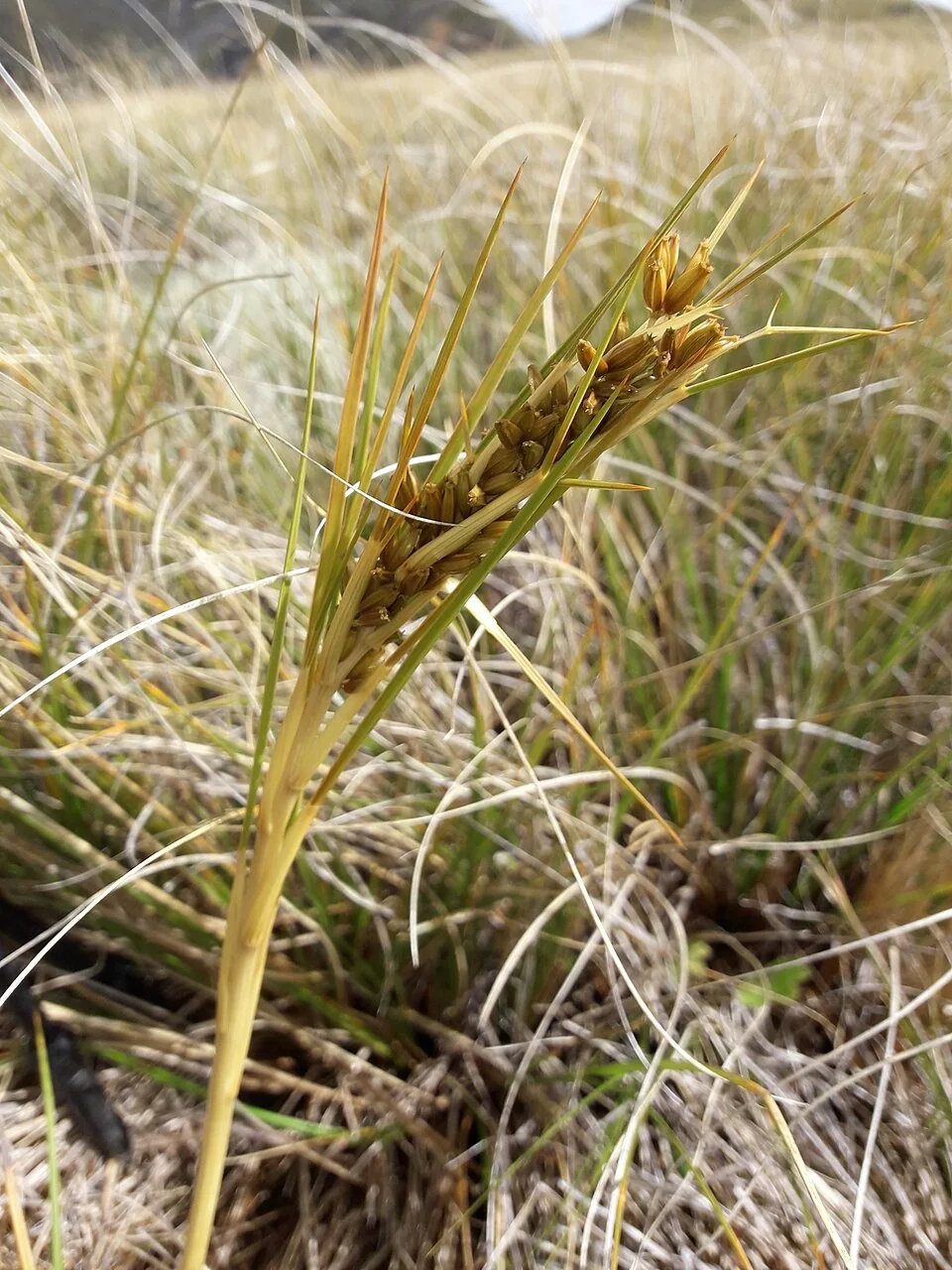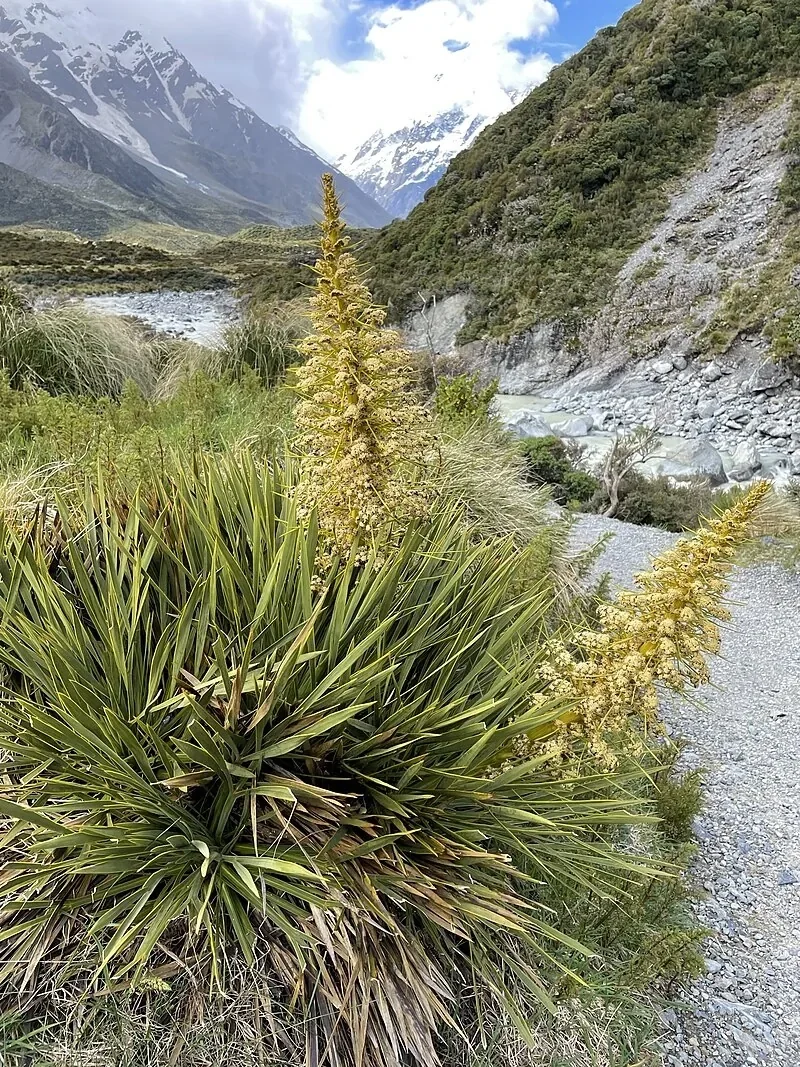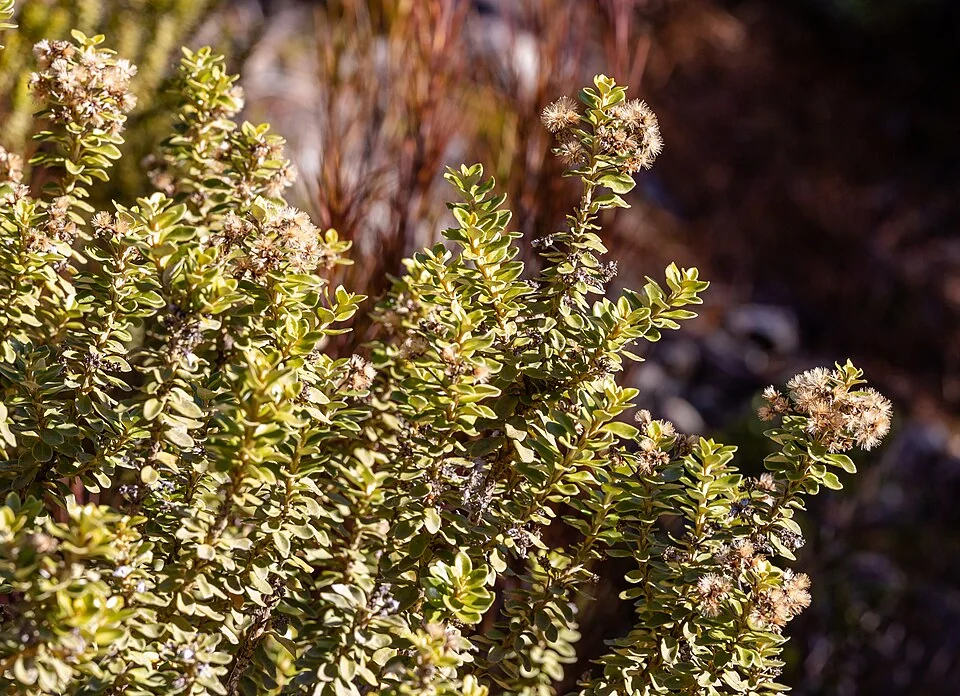
Coin-Leaved Tree Daisy
Olearia nummularifolia
Round-leaved Tree Daisy (scientific name: Olearia nummularifolia ) Round-leaved Tree Daisy is a native tree daisy that produces masses of small white or cream flowers. Like other Olearia species, it's valued for its hardy nature and ability to provide shelter and nectar for native wildlife. Explore more in the native plants index .

Plant Description
Botanical Features
Coin-leaf Daisy in Practice
The coin‑like leaves of Olearia nummularifolia make it a distinctive shrub of subalpine ledges and open scrub. Although direct rongoā is limited in records, its role as hardy shelter and late‑season nectar aligns with māra kai and restoration values. Community projects use eco‑sourced plants to knit together rocky slopes above treelines, where its compact whorls reduce wind scouring and provide seasonal resources for ngā manu and pollinating insects.
Coin-leaved Tree Daisy ( Olearia nummularifolia ), also known as Coastal Daisy or Round-leaved Olearia, is an evergreen shrub native to the South Island of New Zealand. It typically grows to about 3 to 6 feet (approximately 1 to 2 meters) tall and wide, with a dense, bushy, and much-branched habit. It features rounded, thick, leathery, and often silvery-green or yellow-green leaves that are evergreen, with a soft, slightly fuzzy texture. The leaves are small, typically 5-10mm long and 4-6mm wide, and are sometimes described as coin-shaped. The underside of the leaves may have a brownish tomentum, and the edges are often rolled under. In spring and summer, it produces small, delicate white daisy-like flowers, which appear at the branch tips and attract native pollinators such as bees and beneficial insects. Its stiff branches can give it an unusual, box-like appearance.
Quick Facts
Overview
| Scientific Name | Olearia Nummularifolia |
|---|---|
| Height | 2-6 m |
| Spread | 2-4 m |
| Water Needs | Low to moderate |
| Light | Full sun to partial shade |
| Frost Tolerance | Moderate to good |
| Salt Tolerance | Moderate |
| Growth Rate | Moderate |
| Lifespan | Long-lived |
Climate Best Suited to
Regional climate suitability across major New Zealand cities.
Regional Suitability
| Whangārei | Ideal |
| Auckland | Ideal |
| Hamilton | Suitable |
| Rotorua | Suitable |
| Tauranga | Ideal |
| Gisborne | Ideal |
| New Plymouth | Ideal |
| Whanganui | Ideal |
| Palmerston North | Suitable |
| Napier | Ideal |
| Wellington | Ideal |
| Nelson | Ideal |
| Christchurch | Suitable |
| Dunedin | Suitable |
| Invercargill | Suitable |
| City | Climate Suitability |
|---|
Natural Habitat
Coin-leaved Tree Daisy is native to New Zealand, typically inhabiting alpine and subalpine regions, thriving in dry, open environments and low scrub at elevations usually ranging from 600 to 1,400 meters. In the southern parts of New Zealand, it can also be found at lower altitudes. This species is notably resilient to drought, cold, and exposure, a characteristic attributed to its harsh subalpine habitat.
Conservation
Conservation Status
Olearia nummularifolia , also known as the coin-leaved daisy bush or hard-leaved tree daisy, is currently classified as "Not Threatened" in its conservation status. This classification has been consistent since at least 2004, with reviews in 2009, 2012, and 2017 reaffirming this status. This evergreen shrub is native to New Zealand and is found in subalpine areas, typically at elevations between 600 and 1,400 meters. It is known for its resilience to drought, cold, and exposure, making it suitable for various landscaping purposes, including coastal gardens and low-maintenance landscapes. While other species within the Olearia genus, such as Olearia adenocarpa , are critically endangered, Olearia nummularifolia itself does not face significant conservation concerns.
Growing Requirements
Soil Requirements
Alpine shrub suited to gritty, rocky, free-draining soils; avoid heavy wet ground.
Light Requirements
Full sun; highly frost/ wind-tolerant.
Water Requirements
Low; water to establish then sparingly.
Planting Guide
1. Site Selection:
- Sunlight: Choose a location that receives full sun to partial shade. Olearia moschata requires at least 6 hours of direct sunlight daily, though some protection from the harshest afternoon sun can prevent leaf burn.
- Soil: Ensure the planting site has well-drained soil. The plant is adapted to rocky soils and does not tolerate waterlogging.
- Hardiness: Olearia moschata is cold hardy to USDA Zone 8a (around 10°F). In colder climates, it may require winter shelter.
2. When to Plant:
The ideal time for transplanting Olearia moschata is in early spring, as the weather begins to warm after winter. This allows the plant to establish robust growth and acclimate to its new environment.
3. Planting Procedure:
- Dig a hole that is twice as wide as the root ball and just as deep.
- Gently remove the plant from its container and loosen any circling roots.
- Place the plant in the hole, ensuring the top of the root ball is level with the surrounding soil.
- Backfill the hole with soil, gently tamping down to remove air pockets.
- Water thoroughly after planting to settle the soil.
Ecological Role
Olearia nummularifolia forms tight, low shrubs on alpine and subalpine slopes, sheltering fauna and stabilising soils.
Pollination and Seed
- Nectar/pollen: Heads support alpine pollinators in brief summer windows.
- Wind-borne achenes: Seed reaches open screes and ridges for rapid recruitment.
Microhabitat and Stability
- Wind shadow: Compact crowns reduce wind shear at ground level, aiding seedling establishment.
- Scree binding: Roots knit mobile gravels, curbing erosion.
By feeding insects and armouring mobile slopes, O. nummularifolia strengthens alpine ecosystem function.
Uses and Significance
Alpine and Rock Garden Applications
Olearia nummularifolia is exceptional for high-country gardens and alpine collections, with its distinctive coin-shaped, thick yellow-green leaves providing unique textural interest in challenging mountain environments. This compact shrub excels in dry and exposed sites where its natural hardiness from subalpine habitats makes it supremely adapted to harsh conditions. Its pseudo-formal growth form lends informal structure to plantings while the vibrant grass-green foliage brightens arid or darker landscape areas.
Low Hedging and Structural Uses
The dense, much-branched, box-like growth habit makes this species ideal for low hedging applications in demanding conditions. Despite being a cold-climate species, hybrid forms adapt surprisingly well to warmer, humid northern areas, expanding its garden versatility. The twiggy, dense growth pattern provides excellent screening while maintaining the plant's distinctive alpine character in cultivation.
Cultural Significance
Cultural Importance
Ecological and Horticultural Value
Round-leaved tree daisy plays a visible role in coastal identity plantings and wildlife-friendly gardens; its compact, coin-leaved form and spring flowers support pollinators while celebrating local coastal flora.
Olearia nummularifolia , also known as Coastal Daisy or Round-leaved Olearia, is a native evergreen shrub from New Zealand. Its "cultural value" primarily refers to its ecological and horticultural importance rather than deep traditional or symbolic cultural significance. Ecologically, Olearia nummularifolia provides nectar and shelter for native insects and birds, making it important in coastal ecosystems and beneficial for wildlife gardens that support pollinators. It is also used in native plant and restoration projects. Horticulturally, it is valued for its distinctive round, silvery-green leaves and delicate white daisy-like flowers that appear in spring and summer. Its compact, bushy, and rounded habit, along with its resilience to drought, cold, and exposure, makes it suitable for coastal gardens, low-maintenance landscapes, mixed shrub borders, and informal hedging and screening. The species name "nummularifolia" itself refers to its coin-shaped leaves. No specific traditional uses by indigenous people, symbolic meanings, or historical importance are widely documented beyond its ecological and landscaping benefits.
Landscaping Ideas
Coin-leaved Tree Daisy ( Olearia nummularifolia ) is an exceptionally distinctive native shrub that brings unique architectural character and outstanding resilience to New Zealand landscaping projects. This remarkable subalpine specialist offers fascinating coin-shaped foliage, vibrant grass-green coloration, and extraordinary hardiness that makes it particularly valuable for challenging sites and specialized garden applications where few other plants can provide reliable performance.
Formal and Structural Design Applications
- Low maintenance hedging: Perfect for creating interesting, tough hedges that require minimal care. Dense twiggy growth and compact form (1.5 m high by 1 m wide) make it ideal for low-to-medium height formal boundaries with unique textural appeal.
- Pseudo-formal structure: Natural box-like growth habit provides informal structure to plantings without requiring extensive pruning or maintenance, offering controlled form with organic appeal that bridges formal and naturalistic design approaches.
- Geometric garden elements: Compact, much-branched, box-like form creates natural architectural elements that can anchor garden designs, provide focal points, or define spaces without overwhelming smaller gardens.
- Contemporary landscape design: Unusual appearance and distinctive foliage texture make it excellent for modern landscape designs that emphasize unique form, texture, and low-maintenance plant selections.
Alpine and Challenging Site Solutions
- Subalpine landscape recreation: Essential component for authentic New Zealand alpine environments, naturally occurring at 600-1,400 m elevation and perfectly adapted to extreme mountain conditions including drought, cold, and exposure.
- Dry and exposed site excellence: Outstanding tolerance for challenging conditions makes it invaluable for sites where most other plants struggle - ridgelines, exposed slopes, and areas with poor soil and limited water availability.
- Rock garden centerpieces: Distinctive coin-shaped leaves and compact growth create fascinating focal points in alpine rock gardens where its unusual form and resilience showcase subalpine plant adaptations.
- Erosion control plantings: Dense root systems and tough constitution make it excellent for stabilizing slopes, banks, and areas prone to erosion while providing attractive year-round coverage.
Colour and Textural Design Features
- Vibrant foliage contrast: Bright grass-green colour provides exceptional contrast in plantings, particularly effective for brightening arid or dark environments where its luminous foliage creates striking visual impact.
- Unique textural elements: Small, closely-set, coin-shaped leaves (5-10mm long) create distinctive fine texture that contrasts beautifully with broad-leaved or coarse-textured companions in mixed plantings.
- Seasonal flower displays: Smothers itself in beautiful white daisy flowers during summer, transforming the appearance from foliage plant to spectacular flowering display that attracts beneficial insects.
- Year-round consistency: Evergreen nature ensures reliable colour and structure throughout all seasons, with leathery leaves maintaining appearance through extreme weather conditions.
Wildlife and Ecological Landscaping
- Pollinator support gardens: Summer flowering provides valuable nectar resources for native insects including butterflies and native bees, supporting local biodiversity when many other plants may not be blooming.
- Habitat creation: Dense twiggy growth provides excellent shelter and nesting opportunities for small birds and beneficial insects, contributing to ecosystem diversity in garden environments.
- Conservation landscaping: Important for conservation-focused landscapes that preserve and display New Zealand's endemic subalpine flora, contributing to biodiversity preservation and education efforts.
- Native plant collections: Highly valued in specialist native gardens and botanical collections for its distinctive characteristics and representation of unique subalpine adaptations.
Climate Adaptability and Versatility
- Wide climate tolerance: Surprisingly adaptable species that thrives in both cool mountain conditions and warm, humid northern areas when hybridized (O. nummularifolia x coriacea), offering versatility across New Zealand climates.
- Lowland to alpine transitions: Naturally descends to lowlands in southern parts of its range, making it suitable for creating elevation-themed gardens that transition from lowland to alpine plant communities.
- Extreme weather resilience: Outstanding tolerance for drought, cold, and exposure makes it reliable in unpredictable climates where plant survival can be challenging.
- Microclimate creation: Compact growth helps create beneficial microclimates for more tender plants while establishing shelter in exposed locations.
Specialty Garden Applications
- Drought-tolerant landscapes: Exceptional resilience to drought conditions makes it perfect for xeriscaping and water-wise gardens where minimal irrigation is available or desired.
- Rooftop and container gardens: Compact size and tough constitution make it excellent for container cultivation, rooftop gardens, and other challenging growing situations with limited root space.
- Coastal adaptations: While naturally subalpine, its tough constitution allows adaptation to coastal conditions where salt tolerance and wind resistance are valuable characteristics.
- Educational and demonstration gardens: Fascinating growth habit and distinctive foliage make it excellent for educational gardens where unique plant adaptations can be demonstrated and appreciated.
Low-Maintenance Design Benefits
- Minimal care requirements: Once established, requires virtually no ongoing maintenance beyond occasional light shaping, making it ideal for low-maintenance landscapes and areas with limited garden management.
- Natural form retention: Maintains attractive compact shape without extensive pruning, developing box-like form naturally that never becomes overwhelming or unmanageable.
- Pest and disease resistance: Natural mountain adaptations provide excellent resistance to most common garden problems, reducing need for interventions or treatments.
- Long-term reliability: Slow-growing but long-lived nature ensures decades of consistent performance once established, providing excellent return on landscape investment.
Design Integration and Companion Planting
- Subalpine plant communities: Pairs excellently with other mountain natives like Hebe, Dracophyllum, and Celmisia species for authentic high-elevation ecosystem recreation and natural plant associations.
- Textural contrast combinations: Distinctive fine-textured foliage creates stunning contrasts with broad-leaved or architectural plants, enhancing overall garden composition and visual interest.
- Mixed hedging systems: Excellent component of mixed native hedges where different textures, forms, and flowering times create diverse, interesting boundaries with extended seasonal appeal.
- Gravel and stone gardens: Natural affinity for rocky, well-draining conditions makes it perfect for gravel gardens and stone-based landscapes where its unique character can be fully appreciated.
Seasonal Care Calendar
Spring
Plant new specimens or divide established clumps. Perform light formative pruning to shape and encourage new growth, preparing the plant for the upcoming flowering season.
Summer
Minimal watering is typically required for established plants due to their drought tolerance. Avoid excessive fertilization, as this alpine species prefers leaner conditions.
Autumn
Lightly shape the plant after flowering has concluded to maintain its compact form and remove any spent blooms, ensuring a tidy appearance and preparing for winter.
Winter
This hardy plant tolerates cold well. Ensure excellent drainage, especially in areas prone to heavy winter moisture, to prevent any potential root rot issues.
Pruning and Maintenance
Techniques and Timing
Coin-leaved tree daisy maintains its natural compact, box-like form with minimal intervention, though light clipping enhances the dense, twiggy structure that defines this alpine species. The stiff branching pattern responds well to gentle shaping for hedging applications, but avoid hard renovation cuts as the plant's natural resilience works best with moderate pruning. Regular tip pruning maintains the pseudo-formal growth habit while preserving the characteristic coin-shaped leaf arrangement that makes this species so distinctive in alpine garden settings.
How to Grow Coin-Leaved Tree Daisy
Coin-leaved Tree Daisy is a compact alpine shrub with distinctive coin-shaped leaves and white daisy flowers. This hardy member of the Asteraceae family is naturally found in subalpine and alpine regions of New Zealand, where it has adapted to challenging conditions including strong winds, frost, and poor soils. Coin-leaved Tree Daisy is particularly valued in cultivation for its unique texture, compact growth habit, and resilience, making it an excellent choice for rock gardens, alpine plantings, or as a low hedge in exposed sites. Understanding its propagation methods is key to successfully growing this delightful species.
From Cuttings
Semi-hardwood cuttings are a reliable and efficient method for propagating Coin-leaved Tree Daisy, ensuring that new plants retain the exact characteristics of the parent. Take 8-12 cm cuttings from healthy, non-flowering shoots in late summer or early autumn. Dip in rooting hormone and place in a well-draining propagation mix. Maintain consistent humidity with misting or enclosed propagation chambers. Successful rooting typically occurs within 6-8 weeks under warm, humid conditions. Once rooted, the new plants can be potted on and grown in a sheltered environment until they are ready for planting.
From Seed
Propagating Coin-leaved Tree Daisy from seed is a viable method, though it requires fresh seeds and careful attention to conditions. Collect fine seed from dried flower heads in late autumn, storing in cool, dry conditions until sowing in spring. Surface-sow without covering on a free-draining seed mix, as seed requires exposure to light for optimal germination. Maintain consistent moisture without waterlogging, with germination typically occurring within 2-4 weeks under suitable conditions of 18-20°C. Seedlings establish quickly and can be transplanted when large enough to handle safely. This method is crucial for maintaining genetic diversity and for large-scale restoration projects.
Pests and Diseases
Coin-leaved Tree Daisy ( Olearia nummularifolia ) is remarkably problem-free and represents one of the most resilient native shrubs available for New Zealand gardens. Its exceptional natural adaptation to harsh subalpine environments has resulted in outstanding resistance to both pests and diseases, making it an ideal choice for gardeners seeking robust, low-maintenance plants that can thrive in challenging conditions.
Outstanding Disease Resistance
- Naturally pest-free and disease-free: This species demonstrates exceptional resistance to common garden problems, with virtually no recorded issues with fungal diseases, bacterial infections, or viral problems under normal growing conditions.
- Subalpine hardiness advantage: Natural adaptation to extreme mountain conditions including drought, cold, and exposure has resulted in a plant with inherent disease resistance that surpasses most garden plants.
- Root system resilience: While shallow-rooted like other Olearia species, the tough constitution prevents most root rot and crown rot problems that might affect less hardy plants in similar conditions.
- Drought-stress immunity: Exceptional tolerance for extended dry periods means it rarely experiences the stress-related diseases that affect other plants during water shortage conditions.
Minimal Pest Issues
- General pest resistance: Natural mountain habitat adaptation provides excellent protection against most common garden pests, with the tough, leathery, coin-shaped leaves being generally unappealing to browsing insects.
- Scale insect tolerance: While occasionally may host minor scale insect populations, the plant's vigor typically prevents any serious damage or decline from these pests.
- Aphid resistance: Dense, waxy foliage and tough leaf texture make it generally unattractive to aphids and other soft-bodied insects that prefer more tender plant material.
- Browsing animal protection: Leathery, thick leaves with brownish tomentum underneath are generally unpalatable to rabbits, possums, and other browsing animals, providing natural protection.
Cultural Management for Optimal Health
- Root damage prevention: The primary cultivation challenge is protecting shallow roots from damage during gardening activities. Avoid deep cultivation around the base and use care when weeding or applying mulch.
- Proper drainage maintenance: While extremely drought-tolerant, ensure good drainage to prevent the rare possibility of root problems in consistently waterlogged conditions, particularly in heavy clay soils.
- Wind protection considerations: In extremely exposed locations, young plants may benefit from initial protection from severe cold, drying winds until well-established, though mature plants are exceptionally wind-resistant.
- Mulching benefits: Like other Olearia species, benefits from appropriate mulching to protect shallow roots while maintaining the well-draining conditions it requires for optimal health.
Environmental Stress Tolerance
- Cold tolerance: Outstanding resistance to frost and cold temperatures due to natural subalpine origins, rarely experiencing cold-related damage even in severe winter conditions.
- Heat stress resistance: While adapted to cool mountain conditions, the hybrid form (O. nummularifolia x coriacea) demonstrates remarkable adaptability to warm, humid northern areas, showing exceptional climate versatility.
- Drought stress management: Exceptional drought tolerance means it rarely experiences water-stress related problems that can predispose other plants to pest and disease issues.
- Exposure tolerance: Natural adaptation to exposed alpine conditions provides resistance to wind damage, sun scald, and other environmental stresses that might affect less hardy species.
Preventive Care Strategies
- Site selection optimization: Choose well-draining sites in full sun to partial shade, avoiding waterlogged areas or locations with poor air circulation that might create conditions for any potential problems.
- Gentle maintenance approach: Avoid aggressive pruning or root disturbance that might stress the plant. Light shaping when necessary is sufficient to maintain health and form.
- Natural growing conditions: Provide conditions that mimic its natural habitat - well-draining, rocky or gravelly soils with good exposure - to maximize its inherent resistance to problems.
- Minimal intervention philosophy: This species thrives with minimal care and interference. Avoid overwatering, overfertilising, or excessive maintenance that might disrupt its natural resilience.
Long-Term Health Maintenance
- Natural immunity support: Work with the plant's exceptional natural resistance rather than implementing preventive treatments that are unnecessary for this remarkably hardy species.
- Companion planting benefits: Use alongside other hardy native species that create beneficial growing conditions and support the overall health of the garden ecosystem.
- Observation rather than intervention: Regular monitoring is more about appreciating plant health than identifying problems, as this species rarely requires corrective action.
- Stress-free cultivation: Focus on providing appropriate site conditions and avoiding plant stress rather than managing pest and disease problems that are unlikely to occur.
Seasonal Care Considerations
- Winter resilience: Excellent cold tolerance means no special winter protection is needed, though in extremely cold areas, some shelter from cold, drying winds may benefit young plants.
- Summer drought tolerance: Outstanding ability to withstand summer drought means minimal irrigation requirements and no drought-stress related health issues.
- Year-round stability: Consistent health throughout all seasons with no particular periods of vulnerability to pests or diseases, making it exceptionally reliable.
- Low-maintenance appeal: Seasonal care requirements are minimal, focusing on light maintenance rather than pest and disease management.
Troubleshooting Rare Issues
- Poor performance diagnosis: If the plant shows any decline, the cause is most likely environmental (poor drainage, root damage, or inappropriate site conditions) rather than pest or disease problems.
- Root protection priority: Any cultivation problems are typically related to shallow root damage rather than pest or disease issues, making careful site management the priority.
- Site condition evaluation: Address growing conditions first when troubleshooting any rare problems, as this species' exceptional hardiness means issues are usually environmental rather than biological.
- Professional consultation rare: Given the species' exceptional problem-free nature, professional pest and disease consultation is rarely necessary for this remarkably resilient plant.
Coin-leaved Tree Daisy stands out as one of the most trouble-free native plants available, requiring virtually no pest or disease management while providing exceptional garden performance in challenging conditions.
Bonus Tip
Expert Growing Advice
Round-leaved tree daisy ( Olearia nummularifolia ) comes from dry, open subalpine sites. Keep irrigation sparse and use a gritty, free-draining soil to avoid floppy growth; the natural, compact cushion forms in lean conditions with high light.




